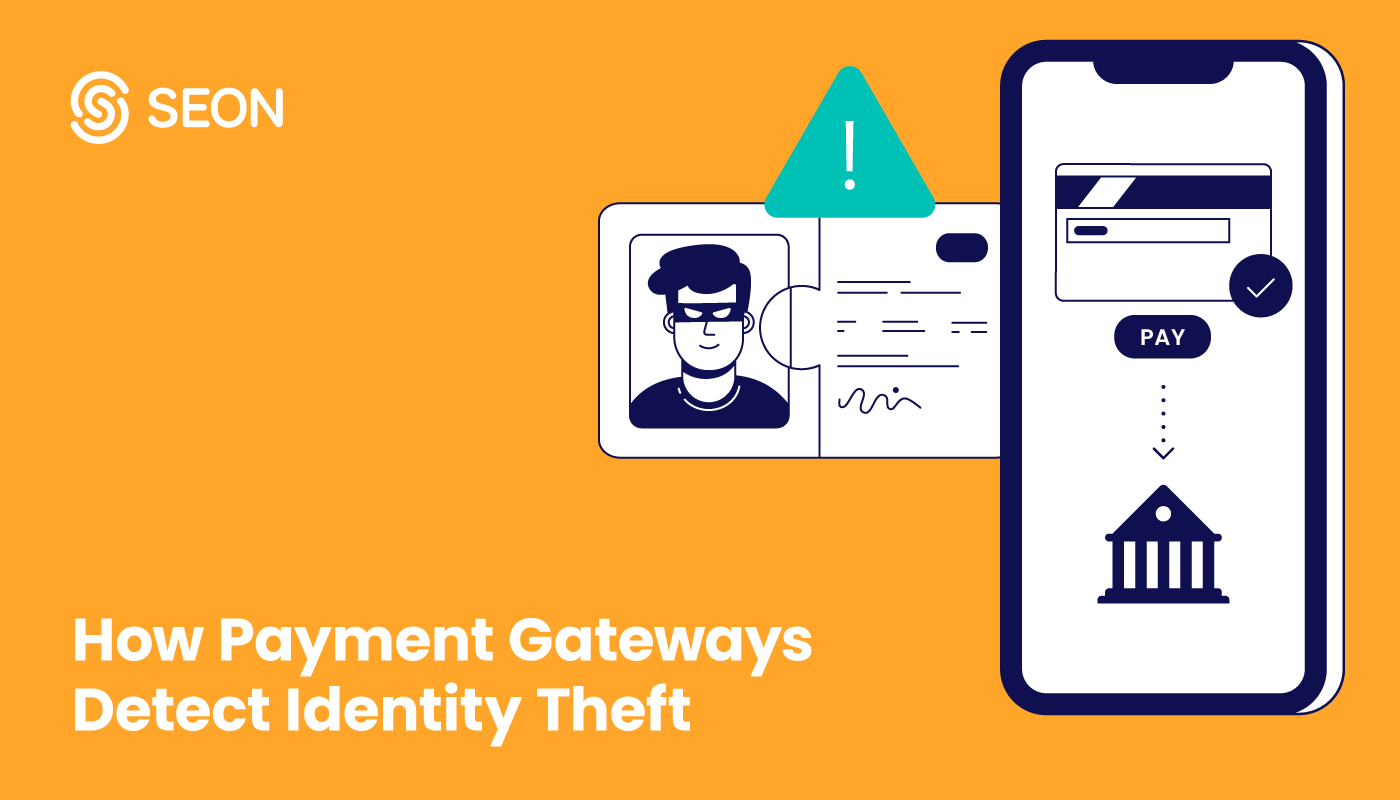Each year, around four percent of the global GDP is lost to fraud, with digital payment fraud up a reported 25% over the last three years. Payment gateways and payment service providers (PSPs) must adopt strategic measures to combat escalating fraud rates, especially as they try to capture larger market shares.
The rapid growth of global real-time payments has added more pressure on gateways and PSPs to block fraud with precision and speed. To ensure safe and sustainable business growth, assess your fraud exposure and implement frictionless solutions for prevention and detection.
What Is Payment Fraud?
Payment fraud involves unauthorized transactions using false or stolen payment information, compromising financial security. This fraud typically occurs when credit card details are stolen through data breaches or obtained from the dark web. Various payment methods, such as virtual checks, direct debits, and phone payments, are particularly susceptible when attackers have the necessary details.
Payment fraud can cause significant financial loss, damage credit scores, and erode trust for consumers and businesses. Cybercriminals exploit payment system vulnerabilities using phishing, malware, and social engineering. Therefore, robust security measures like encryption, tokenization, and multi-factor authentication are crucial. Continuous payment transaction monitoring, real-time fraud detection, and user education on safe online practices are essential to mitigate these risks.
How Does Payment Fraud Affect Businesses?
Payment fraud has several negative effects on businesses:
- Financial Impact: Companies face the financial burden of fraudulent transactions, including chargebacks and lost goods, which can significantly affect their profitability.
- Higher Operational Costs: To combat fraud, businesses must invest in advanced security systems, fraud detection technologies, and employee training, leading to increased operational expenses.
- Damage to Reputation: Frequent fraud incidents can undermine customer trust, leading to a decline in customer loyalty and potential long-term decreases in sales.
- Operational Challenges: Addressing and investigating fraud cases diverts resources and focus away from core business activities, disrupting daily operations and reducing overall efficiency.
- Regulatory Risks: Non-compliance with security regulations can result in substantial fines and legal repercussions, adding further strain to the business’s financial and operational health.
Types of Payment Fraud
- Account Takeover (ATO)
Colloquially known as hacked accounts, ATO is a form of payment fraud in which fraudsters gain access to a victim’s account, typically an online banking, an ecommerce account or a digital wallet. Using stolen or phished credentials to log in, the fraudster changes account details to seize control. Once in, they can make unauthorized transactions, transfer funds, and purchase using stored payment methods. - Chargeback Fraud
Frequently referred to as friendly fraud, chargeback fraud occurs when a cardholder makes an online purchase and then requests a chargeback from the issuing bank after receiving purchased goods or services. Legitimate chargebacks are meant for unauthorized use or defective products. Chargeback fraud is committed when the request is made despite there being no actual issue with the transaction. - Stolen Card Fraud
From the physical theft of card information to using a card’s skimmed details from an illegal device, stolen card fraud involves the unauthorized use of credit or debit card information. Fraudsters use card details to make unauthorized transactions or cash withdrawals, leading to financial loss for legitimate cardholders and the financial institutions involved. - Money Laundering
Money laundering is a complex financial crime involving concealing the origins of illegally obtained money. Typically, it involves three steps: placement, layering and integration. Placement involves introducing illicit funds into the financial system, layering conceals the source through a series of transactions and bookkeeping tricks, and integration provides legitimacy to the funds through additional transactions and investments. This process makes it difficult to trace the illegal money back to the crime. - Identity Theft
The most common type of payment fraud, identity theft, involves the unauthorized use of someone’s PII to conduct fraudulent transactions – making purchases, withdrawing funds or opening new accounts – rendering the victim with financial losses and a damaged credit history. - Refund Fraud
Another common type of fraud, refund fraud, occurs when money is illicitly obtained from a business through deceptive means. In other words, when an individual makes a purchase (either legitimately or using fraudulent means), then manipulates or deceives a merchant’s return policy to gain a refund or credit they are not entitled to, resulting in a financial loss for the business. - Bank Identification Number (BIN) Attacks
A BIN attack is a brute force type of attack in which fraudsters use the first six digits on a credit card to algorithmically try to guess the other legitimate numbers in an attempt to generate a usable card number. Once a valid card number is obtained, fraudsters use it to make unauthorized transactions or create counterfeit cards. - Card Testing
Card testing is when fraudsters use stolen credit card information to make small online transactions to verify if the card details are valid and active. Having confirmed that a card is functional, fraudsters use it for more significant fraudulent transactions or sell it as validated information to other criminals. This form of fraud creates unauthorized charges for the cardholder, as well as chargebacks and processing fees for a business. - Triangulation Fraud
Triangulation fraud is a particularly malicious and complex exploit involving the customer, fraudsters and an online store. The fraudster sets up a web store or lists items on a big marketplace at unrealistic prices. When they receive an order for an item, they’ll use the unsuspecting customer’s information, as well as the shipping address and stolen credit card data, to purchase that item from a different store. The customer receives their order, unaware of the fraud. Meanwhile, the customer’s payment information is retained for further unauthorized transactions. - Authorized Push Payment (APP) Fraud
APP fraud refers to fraudulent activity where victims are coerced into executing real-time payments to fraudsters, often through social engineering tactics, including impersonation. These authorized fraudulent schemes can encompass investment scams, where victims are deceived into transferring funds for fictitious investments, as well as romance scams, where the fraudster tricks the victim into believing they are in a romantic relationship.
Payment Fraud Detection
To detect payment fraud, your business must be able to ascertain whether a customer is who they purport to be. This requires a comprehensive overview of customer data, behavior and payment information.
The best approach deploys innovative technologies that monitor real-time transactions and payments, including:
- Device intelligence – to see the customers’ software and hardware configuration
- BIN lookups – to check card validity
- IP lookups – to understand the location of where the customer is and how a customer is connecting to your website
- Reverse email and phone lookups – to establish user identity and validity.
There are three initial account-based intersections where fraudsters can collect critical data:
User Signups
This step is the first time you can assess the traffic that lands on your website or app. At account creation, it is essential to check if the data a customer provides matches the intelligence you have on them. Email, phone and IP lookups can validate a customer’s details at lightning-fast speeds, cross-referencing real-time data from the account holder’s digital history; the more extensive that is, the more likely they are legitimate.
Having access to reliable customer data means you can weed out fraudsters right at the point of sign-up, meaning they have no chance of committing fraud or onboarding into your product or system. For digital wallets, cash apps and cross-border payment providers, frictionless onboarding for new customers is critical to delivering a great customer experience without subjecting them to lengthy identification verification (IDV) know-your-customer (KYC) checks.
User Logins
Each user login grants an opportunity to validate the customer’s identity. Using behavior analysis, IP lookup and device fingerprinting to set up risk rules to spot unusual user activity, you can filter out suspicious login attempts and stop ATO in its tracks.
User Transactions
Users enter credit or debit card information at the checkout and payment stage. At this step, checking payment validity against customer profile data is vital to mitigate the likelihood of unauthorized purchases. Practical and adaptable transaction monitoring includes machine learning that trains with the data you feed into it and enables you to stop these fraudulent transactions from going through. For payment providers offering real-time transactions, this must be delivered in a fast and frictionless manner.
Capturing aggregated data from these three steps and running information through a risk-scoring engine means you can assess the likelihood of fraud at scale and speed. Customizable scoring engines can be configured to your risk tolerance, which is particularly helpful when expanding your payment offerings or entering new markets and, therefore, facing increased risk exposure.
The most effective and efficient solutions are powered by machine learning to deliver complex decisions quickly, reducing customer friction and the need for costly, slow manual reviews. Solutions that include transparent whitebox decisions and traditional blackbox AI give you the best of both worlds – the ability to see and understand how risk decisions are made, plus speed and accuracy.
Payment Fraud Prevention
Preventing payment fraud is about more than just checking payment details. Fraud detection software – like SEON – can help you examine relevant data to create a comprehensive profile of your customer before and during transactions so you can be confident with whom you are dealing with online. Here’s how:
Digital Footprinting
Digital footprinting grants access to your customers’ online identity and behavioral data in real-time by examining unique digital and social profiles to detect and prevent fraudulent user activities, including looking at:
- IP Analysis: Beyond verifying geolocation, checking if a user is hiding their connection behind a VPN, proxy, or emulator can indicate whether the user has a higher likelihood of being a fraudster.
- Email Analysis: A single data point, like an email address, can reveal important information. With reverse email search functionality, it can be deciphered if an account was created from a suspicious domain, a free or disposable address, or if it has appeared in any prior data breaches, indicating a fraud risk. Our email analysis also checks to see what digital and social media presence is connected to an email, giving you more contextual information to decide if you are dealing with a real customer.
- Phone Analysis: Similarly, a phone number can be readily checked against records to define a user profile. Looking at details such as whether it is a landline or mobile account, if the carrier location is close to the shipping address, or if it’s a disposable phone can serve to triangulate identity, among other markers. Like our email analysis, we check to see what digital and social media profiles or messenger services are connected to a phone number for more informed decision-making.
- Device Fingerprinting: Examining a user’s hardware and software is the best way to understand how users connect to your site. Our device intelligence identifies browsers, add-ons, extensions and tools designed to get around most other anti-fraud solutions. User connections can spot hidden links between accounts, helping you detect bot farms better or connected fraudulent accounts. By investigating hundreds of real-time data points, device fingerprinting enhances your defenses without slowing down your customers.
As a fraud prevention and AML solution, we combine advanced digital footprinting, proprietary device intelligence and a fully customizable machine learning rules engine to ensure real-time fraud prevention.
Find Out More
BIN Analysis
Extract as much information as possible about a card by checking its Bank Identification Number against specific databases. Identify fake prepaid cards, gift cards and fake credit cards to counter payment fraud effectively.
Machine Learning
A whitebox machine learning solution with transparency baked into its reasoning, blackbox AI offers the best of both worlds: speed and transparency.
Anti-Money Laundering (AML)
Designed to identify and prevent the process of making illegally gained proceeds appear legitimate, AML controls check for suspicious activities, monitor transactions and conduct due diligence on customers to ensure compliance with global AML regulations.
Choosing a Payment Fraud Prevention Solution
Using a comprehensive fraud prevention solution from SEON means you have the technology to stop fraud in its tracks and access to fraud experts who can help you proactively defend against fraud attacks that affect payment providers and payment gateways.
While point solutions may seem the most accessible or affordable route, they do little to futureproof your business against increasingly sophisticated fraud practices. The ideal anti-fraud solution is an end-to-end offering that can protect and prevent fraud in lockstep as your business scales.
Combining advanced digital footprinting with proprietary device intelligence and a customizable rules engine backed by black- and whitebox machine learning, SEON delivers unmatched customer insights to ensure real-time fraud prevention. The result is a precise, API-first anti-fraud solution designed to give your business the edge it needs to safeguard your customers and mitigate revenue threats on a global scale.
API Integration
Many companies start by building a fraud prevention technology stack from point solutions – adding more advanced tools as they mature and scale. SEON’s end-to-end API-first fraud prevention and detection approach allows your company to operate flexibly. With fast integration execution, high-quality documentation and support from anti-fraud experts that minimizes your development risk, you can customize our solution, scale operations and get real-time protection that seamlessly integrates with your system.
Whitebox Machine Learning
In contrast to blackbox models, where the visibility into its machine learning decision-making processes is not explained, whitebox machine learning provides transparency, ensuring that your team accesses the fraud risk score and the logic behind it.
This clarity is invaluable for customizing fraud detection rules and risk scores to refine and escalate automated processes. These rules, which can be manually set, are augmented by AI-driven and machine-learning processes that analyze historical data, consider chosen frameworks for tolerance and risk, and then incorporate these factors into future score calculations. The key advantage of whitebox machine learning is that it provides more precise insights into score calculations, giving fraud and risk managers greater control and understanding and enabling them to accept, reject, or modify the system’s suggestions more effectively.
Dynamic Friction
Dynamic friction is the balancing act between two actions: light or heavy KYC checks. Your customer’s journey must be as frictionless as possible. While the most secure route is to ID each signup, putting too many obstacles between your users and your site will chase customers off to your competition, mainly when performing authentication checks for KYC or AML purposes.
Running security checks in the background and triggering ID checks on only the very risky transactions is the best of both worlds. To do so, you must have enough information to generate an accurate risk score. Light KYC includes cross-checking digital and social media platforms, while heavy KYC requires more in-depth ID verification methods such as passport checks, selfies and live verification. If your user’s digital footprint triggers a risk score, you can automate flow with a fraud prevention solution. If that individual’s score is low enough, they can continue to the next payment stage immediately, or if you should proceed with caution, triggering additional authentication such as 2FA or OTP.
Frequently Asked Questions
A risk-scoring engine can block or trigger a review of suspicious transactions before approval to reduce online payment fraud.
Create a watchlist of customers who request multiple refunds and ensure that your customer success team is informed regarding past customer behaviors.
Generally, screening at signups, logins and transactions is a best practice. Additionally, initiate screening measures catalyzed by actions, including password or address changes.
The answer to this is dependent on your business. Chargeback guarantees can create a conservative system that blocks valid transactions.
You might also be interested in reading about:







